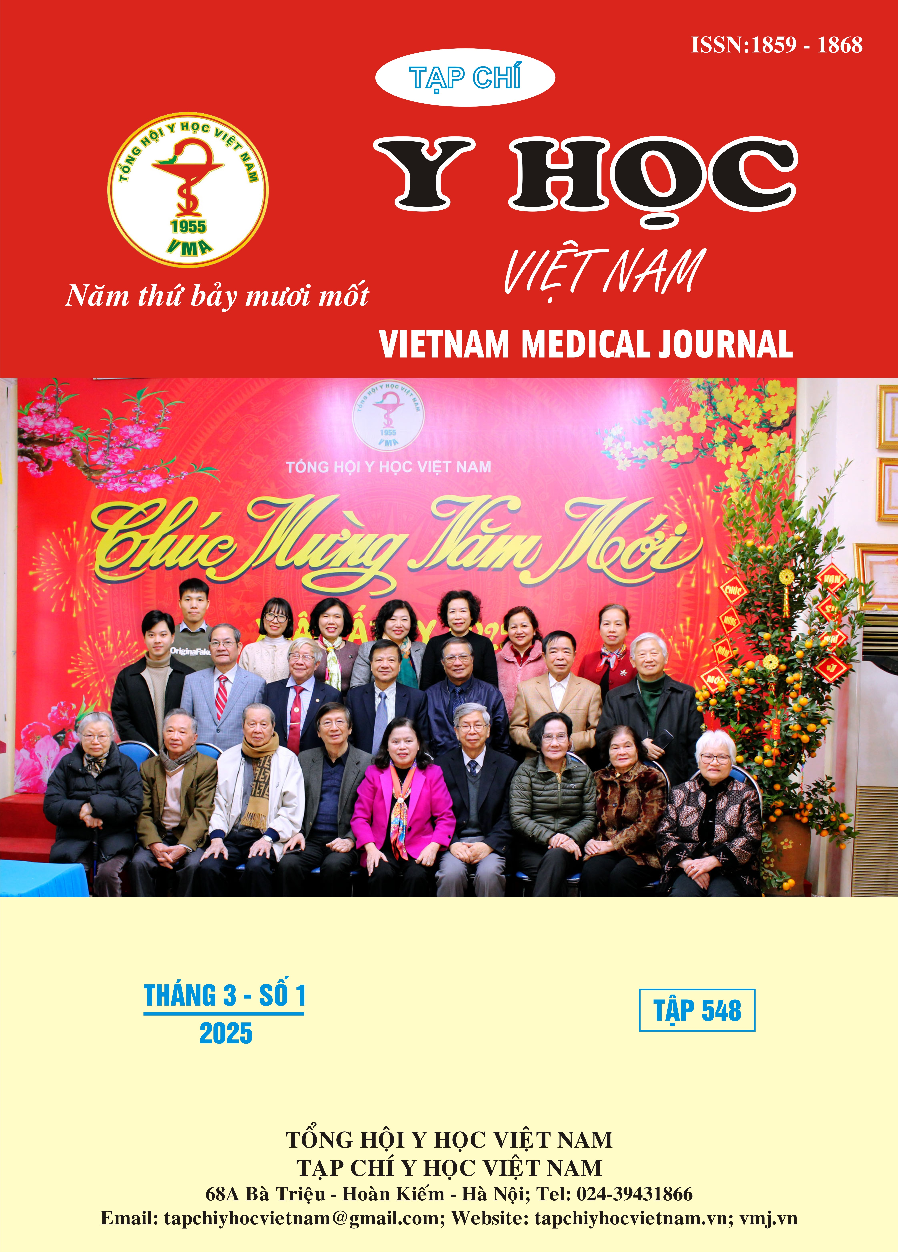CLINICAL CHARECTERISTICS OF TOOTH DECAY DISEASE AND THE ABILITY TO ACCESS DENTAL CARE SERVICES IN THE ELDERLY OF THE DAO ETHNIC PEOPLE IN YEN BAI PROVINCE 2024
Main Article Content
Abstract
Objective: Describe the current situation of tooth decay and access to dental care services of elderly people of Dao ethnic in Yen Bai province in 2024. Research method: Cross-sectional descriptive study with analysis was conducted through direct interviews and dental examinations for 420 elderly people in August 2024. Results: The rate of elderly people with tooth decay accounted for 53,6%. Signs of tooth is cold and painful at the tooth decay accounts for 92,4% and 82,4%. Elderly people has 29,3% of dentin caries and 17,1% of enamel caries. Pulpitis accounts for 7,1% and tooth loss accounts for 38,6%; The elderly has 4-6 tooth decay accounts for 56,9%; decay from 1-3 is 30,7% and decay over 6 teeth are 12,4%. The proportion of elderly people living 4-5 km away from medical station is 48,1%, 1-3 km away is 15,5% and over 5 km away is 36,4%. The number of dental clinics and dental specialists in the district center is 28,6% and 7%. Elderly people with access to dental care services account for 19,8%. Conclusion: Elderly people of the Dao ethnic group in Yen Bai province have an average level of tooth decay (53,6%). Tooth decay causes damage to teeth and affects eating and health. The number of elderly people were’nt accessed to dental care services is high (80,2%).
Article Details
Keywords
Elderly people, Dao ethnic group, tooth decay, access to services
References
2. Liu L., Zhang Y., Wu W. et al (2013), Prevalence and correlates of dental caries in an elderly population in northeast China. PLoS One, 8(11), e78723. https://doi.org/10.1371/journal. pone.0078723
3. Vũ Duy Hưng (2019), Nghiên cứu tình trạng sức khỏe răng miệng, nhu cầu điều trị và đánh giá hiệu quả một số can thiệp cho người cao tuổi tại tỉnh Yên Bái, Luận án Tiến sĩ chuyên ngành Răng Hàm Mặt, Trường Đại học Y Hà Nội năm 2019.
4. Nguyễn Mạnh Hà (2010), Sâu răng và các biến chứng, Nhà Xuất bản giáo dục Việt Nam, tr 5-18.
5. Petersen P.E., Baez R.J. (2013), World Health Organization. Oral Health Survey, Basic Methods, 5th Edition.
6. Sumaiya Zabin E.Z, Nafij B.J et al (2013), A study of teeth status and oral health related quality of life among elderly in Bangladesh. International Medical Journal,20(5), 610-614.
7. Hạnh, P. T. B. ., Hưng, L. ., Hạnh, N. T. ., & Hương, H. L. . (2023), Thực trạng sâu chân răng ở người cao tuổi và một số yếu tố liên quan tại Bệnh viện E năm 2021 - 2022. Tạp Chí Nghiên cứu Y học, 164(3), 180-187. https://doi.org/ 10.52852/tcncyh.v164i3.1475
8. Thị Thuý Hồng, V.., Thị Mai Hiên, H.., & Mạnh Tuấn, V.. (2021), Thực trạng sâu răng và nhu cầu điều trị của người cao tuổi tỉnh Bình Dương. Tạp Chí Y học Việt Nam, 502(1). https://doi.org/10.51298/vmj.v502i1.568
9. Nguyễn, B. B. T., & Nguyễn, T. T. (2023), Tình trạng mất răng, phục hình răng, nhu cầu và yêu cầu điều trị ở người cao tuổi tại Trung tâm y tế Quận Thanh Khê và Quận Hải Châu thành phố Đà Nẵng . Tạp chí Y Dược học Cần Thơ, 58, 210-216. https://doi.org/10.58490/ctump.2023i58.713
10. Lan Hương, . H. ., & Cao Bính, T. . (2021), Thực trạng sâu chân răng ở người cao tuổi tại bệnh viện Răng Hàm Mặt Trung ương Hà Nội năm 2020 - 2021. Tạp Chí Y học Việt Nam, 503(1). https://doi.org/10.51298/vmj.v503i1.732


